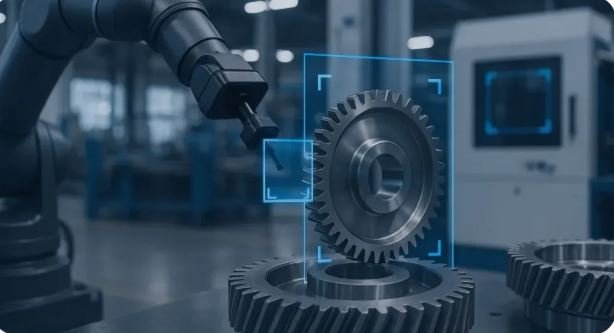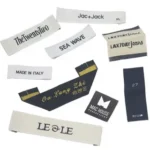Imagine standing on a factory floor watching thousands of components move past an inspector’s station every single hour. The inspector sits there, eyes trained on products passing by, looking for tiny scratches, misalignments, or color inconsistencies. By hour six of the shift, fatigue sets in. Some defects start slipping through. It’s not a character flaw or laziness—it’s just basic human biology. Eyes get tired. Attention wanders. And that’s when problems happen.
This scene repeats daily in manufacturing facilities worldwide, which is precisely why the conversation around automated visual inspection has shifted from “nice to have” to “essential.” But here’s the thing that often gets lost in glossy tech marketing: implementing these systems isn’t a simple plug-and-play solution. It’s complicated, expensive, and requires genuine thinking about your specific manufacturing challenges.
The Real Problem We’re Trying to Solve
Let’s back up and acknowledge what actually drives manufacturers toward computer vision systems. It’s not some utopian dream of perfect automation. It’s practical business pressure.
The defect detection market has grown from $3.5 billion in 2021 to a projected $5 billion by 2026, driven by technological improvements in machine learning, deep learning, and IoT integration that enable real-time monitoring. But market size numbers don’t tell you why individual factory managers are actually making these decisions.
They’re making them because manual inspection depends on human expertise, creating problems through subjectivity, fatigue, and inconsistency—particularly when detecting small or subtle defects—and the labor-intensive nature of manual inspection limits its scalability for high-speed production lines.
Stated differently: they can’t hire enough good inspectors, the ones they do have can’t catch everything, and the costs keep rising. Meanwhile, customers demand lower defect rates and faster delivery. That’s the actual squeeze manufacturers feel.
Why This Matters Right Now in 2025
We’re at a particular inflection point with this technology. Five years ago, computer vision for manufacturing was still fairly specialized—expensive, requiring deep technical expertise, and limited to large corporations with dedicated IT resources. That’s changed meaningfully.
The market is expected to grow from $3.56 billion in 2024 to $5.5 billion by 2032 at a CAGR of 5.6%, driven by growing emphasis on quality control, increasing integration of automation and AI, and tightening regulatory compliance requirements.
What this growth actually means on the ground is more vendors entering the space, more off-the-shelf solutions available, and more accessible entry points for manufacturers of different sizes. A mid-sized electronics manufacturer today can implement something that would have required millions in custom development a decade ago.
But accessibility isn’t solving the real challenge, which brings us to the uncomfortable truth nobody wants to discuss in the marketing materials.
The Honest Obstacles: What Actually Stops Implementation
Walk into any manufacturing facility serious about implementing automated inspection and you’ll hear the same frustrations repeatedly. Not from salespeople pitching the technology, but from operations people actually trying to deploy it.
The Data Problem
Machine learning models require vast amounts of high-quality data to function effectively, and manufacturers may face challenges if they lack sufficient historical data on defects or production variables. But here’s the kicker: defects, by their nature, are rare. A facility making 100,000 components per month might produce only a handful of each specific defect type.
So you end up in this maddening situation: your AI model needs thousands of examples of “cracked solder joint” to learn the pattern, but you only have maybe thirty photos of it in your entire company history. The AI vendors know this, which is why there’s been significant movement toward synthetic data generation—basically creating fake defects computationally. It helps, but it introduces its own complications because synthetic defects don’t perfectly match the chaotic reality of actual manufacturing environments.
Environmental Challenges That Sound Simple But Aren’t
Temperature, lighting conditions, and vibrations in the manufacturing environment can affect the performance of defect detection systems, and achieving a balance between detecting all defects and avoiding false alarms remains challenging, especially with complex geometries or intricate surface textures.
Consider a specific scenario: you install a camera on your assembly line to detect paint defects on metal parts. The camera works beautifully in your test environment with controlled lighting. Then the facility maintenance department changes the overhead lighting position slightly—moving it three feet to the left. Suddenly, your system’s accuracy drops 8%. That’s not a technology failure. That’s just how vision systems work. They’re incredibly sensitive to lighting conditions because they fundamentally operate through light and shadow.
Integration Isn’t Just Technical
Getting a vision system to actually connect with your Manufacturing Execution System, your quality database, and your production scheduling system requires careful planning. Seamless integration of web inspection systems into existing production workflows and control systems is crucial for real-time defect detection and process optimization, requiring standardized communication protocols and interoperability standards.
Practically speaking, this often means custom programming that your systems integrator will charge premium rates for. It means downtime during installation. It means your quality team is learning new workflows. That’s not a one-time cost—that’s recurring friction.
The Generalization Problem
A key challenge is the limited generalization ability of ML models, as detection algorithms are often tailored to specific materials or defect types, making them less effective when applied to new contexts or diverse manufacturing environments.
Training a model to detect defects on aluminum components doesn’t automatically teach it to detect the same defect patterns on plastic components. The color profile is different. The light reflection properties are different. The surface characteristics are different. So if you make multiple product lines, you might need separate models, which multiplies your training effort and maintenance burden.
Understanding What These Systems Actually Do
Rather than mystics talking about “AI” and “deep learning” as magic boxes, let’s get concrete about what’s happening technically.
Most manufacturing vision systems use some variation of convolutional neural networks—essentially mathematical structures designed to recognize spatial patterns in images. They get trained on hundreds or thousands of labeled images where humans have marked where defects are located and what type they are. The network learns to recognize similar patterns in new images it hasn’t seen before.
Region-based convolutional neural networks like R-CNN and Mask R-CNN create bounding boxes around detected objects and can simultaneously perform defect detection and segmentation, showing higher defect detection accuracy than methods trained on defect detection alone.
The result is that when a new product image comes through the camera, the trained model analyzes it and essentially says “I found a defect at this location with 94% confidence” or “I found nothing, with 98% confidence.”
The critical measure isn’t just whether the system finds defects. It’s finding defects without generating excessive false alarms. A system that’s too conservative misses actual problems. A system that’s too aggressive flags things that aren’t real defects, creating waste and disruption. Achieving balance between detecting all defects and avoiding false alarms remains a challenge, and honestly, this is where most implementations spend significant time calibrating after initial deployment.
Why Some Manufacturers Are Actually Succeeding
The ones getting real value aren’t treating this like a technology project. They’re treating it like a business problem that technology helps solve.
They start small. Pick one product line. Pick one specific defect type they know is costing them money. Implement a pilot focused narrowly on that problem. Measure the actual financial impact—not theoretical ROI, but real cost savings from fewer defects getting through.
They measure two different things: what percentage of actual defects does the system catch (true positive rate), and what percentage of things the system flags are actual defects versus false alarms (precision). These are different metrics and they care about both because the business impact depends on both.
They involve the actual operators and quality team from day one, not after the system is built. These are the people who’ll use it daily, and their skepticism and practical feedback are invaluable.
They commit to the boring work: continuing to collect and label defect images, monitoring system performance over time, and retraining periodically as production conditions change.
What the Market Data Actually Shows
The defect detection market is growing, but not explosively. The defect detection market size was estimated at $3.45 billion in 2023 and is expected to reach $5.5 billion by 2032. That’s meaningful growth but not revolutionary.
Within that market, the automated inspection systems segment is expected to reach $2.0 billion by 2032, while visual inspection methodology is projected at $1.9 billion and non-destructive testing at $1.6 billion.
What that breakdown tells you is that different inspection approaches serve different purposes. Not everything needs AI-powered computer vision in manufacturing. Sometimes traditional NDT (non-destructive testing) works better. Sometimes hybrid approaches make sense. The winning manufacturers aren’t trying to automate everything—they’re using different tools for different problems.
The Practical Reality for Most Manufacturers
If you’re running a mid-sized manufacturing operation and wondering whether to invest in this, here’s what you should realistically expect:
A decent pilot implementation—camera, lighting, basic software, some integration—will cost somewhere between $30,000 and $100,000 depending on complexity. That’s not prohibitive for most operations, but it’s real money.
You should expect 4-8 months from “we want to do this” to “this is running in production.” Not because the technology is slow, but because planning, procurement, integration, testing, and team training just takes time.
You should expect recurring costs: software licensing, periodic model retraining, camera maintenance, and system updates. This isn’t a “buy it once” thing.
The financial payback varies wildly depending on your specific situation. If you’re dealing with high-value components where defects are expensive—automotive parts, medical devices, precision electronics—payback can be quite fast, maybe 6-12 months. If you’re dealing with lower-value commodity products, payback takes longer or might not justify the investment.
A Realistic Assessment
Computer vision on manufacturing floors has genuinely arrived as a mature technology. It’s not perfect. It won’t solve all your quality problems. It will introduce new complications around integration and maintenance. But for many manufacturers, particularly those struggling with defect detection or dealing with labor shortages, it represents a meaningful step forward.
The manufacturers winning with this technology aren’t the ones treating it as a tech implementation project. They’re treating it as a business optimization problem where technology is one of the tools they’re using.
They start narrow. They measure real business impact. They involve the people who’ll actually use the system. They’re realistic about implementation complexity and ongoing maintenance requirements.
If you approach it that way, modern computer vision technology can genuinely improve your operations. If you treat it as a tech checkbox to mark off your innovation list, you’ll likely be disappointed.
The question isn’t whether this technology works. It does. The question is whether it solves a specific, measurable problem in your operation—and whether you’re willing to do the real work to make it work.
Related Reads
- Custom Fitness App Development: Build the Fitness App Your Users Actually Want
- Clothing Alteration Melbourne – Expert Cloth Alteration Near You
- How to Spot a ‘Hidden Gem’ in the Used Motor Grader Market
- Why Learning to Ride a Children Cycle Builds Confidence
- How to Choose Packaging for Your Edible Corporate Gifts
- Raspberry Hills Clothing Reimaging an Artistic Modern Wardrobe



